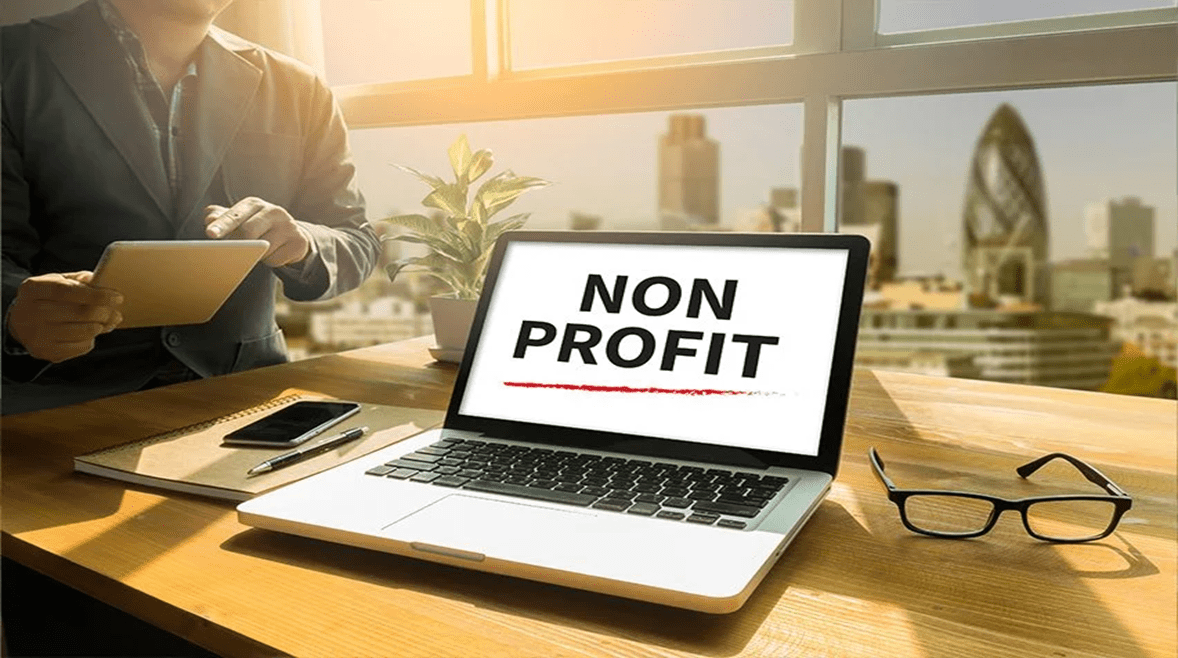Introduction Nonprofit organizations are the backbone of many communities, providing essential services, support, and advocacy for various causes. However, the lifeblood of these organizations often lies in their ability to collect donations. In a world teeming with competing interests and financial demands, securing consistent and substantial funding can be a daunting challenge. This article delves into the common problems nonprofits face in collecting donations, offers practical solutions, and showcases success stories and best practices that can light the way forward. Common Problems in Donation Collection Lack of Donor Engagement and Trust One of the most significant hurdles nonprofits encounter is the lack of engagement and trust from potential donors. Donors today are more cautious about where their money goes and how it is used. They seek transparency and accountability, and any perceived opacity can deter them from contributing. Difficulty in Reaching Potential Donors Many nonprofits struggle with reaching out to potential donors. Traditional methods of fundraising, such as mail campaigns and in-person events, may not be as effective in the digital age. Competing for attention in a crowded online space requires innovative strategies that many organizations have yet to adopt fully. Limited Donation Channels and Methods Another challenge is offering limited channels and methods for donations. In an era where convenience is paramount, not providing various ways for donors to contribute—such as online payments, mobile giving, or cryptocurrency donations—can significantly hinder donation efforts. Issues with Donor Retention Securing a donation is just the first step; retaining donors is an ongoing challenge. Without a strategic approach to donor retention, nonprofits can find themselves in a perpetual cycle of seeking new donors, which is both time-consuming and costly compared to nurturing existing relationships. Solutions for Overcoming Donation Collection Challenges Importance of Building Donor Relationships and Trust Building and maintaining trust with donors is crucial. Transparency in how donations are used, regular updates about the organization’s impact, and personalizing communication can significantly enhance donor trust. Tools like donor management software can help track interactions and tailor communications to individual donors. Utilizing Digital Marketing and Social Media for Outreach In today’s digital-first world, leveraging digital marketing and social media is imperative for reaching potential donors. Effective strategies include: Diversifying Donation Channels and Offering Convenient Methods Providing multiple donation options can make it easier for people to give. Consider implementing: Implementing Strategies for Donor Retention Retaining donors requires a systematic approach: Case Studies and Success Stories Charity: Water Charity: Water effectively utilizes transparency to build donor trust. They use 100% of public donations to fund clean water projects, covering administrative costs through private donors. They also provide GPS coordinates and photos for each funded project, ensuring complete transparency. The Trevor Project The Trevor Project uses digital marketing and social media to reach its audience effectively. Their crisis intervention services for LGBTQ youth are widely promoted through strategic partnerships and social media campaigns, resulting in increased visibility and donations. World Wildlife Fund (WWF) WWF has diversified its donation channels by offering traditional and modern donation methods, including online giving, mobile donations, and symbolic animal adoptions, which appeal to a broad donor base. Tips and Best Practices Enhancing Donor Engagement Expanding Outreach Increasing Donations Practical Steps Conclusion Collecting donations is a critical aspect of a nonprofit’s sustainability and impact. While challenges abound, understanding these hurdles and implementing strategic solutions can significantly enhance your fundraising efforts. Building trust, expanding your outreach, diversifying donation channels, and focusing on donor retention are key strategies to overcome these challenges. By learning from successful case studies and adopting best practices, your organization can improve its donation collection efforts and continue to make a meaningful impact. Remember, every step you take towards optimizing your fundraising strategy brings you closer to achieving your mission. So, take these insights, implement them in your organization, and watch as your ability to collect donations improves, enabling you to better serve your cause. Share this article with your network and continue the conversation about the importance of efficient donation collection in the nonprofit sector. Together, we can create a more sustainable future for the causes we care about.
Problems Nonprofits Face in Collecting Donations and How to Overcome Them
May 26, 2024

Table of Contents
Introduction
Nonprofit organizations are the backbone of many communities, providing essential services, support, and advocacy for various causes. However, the lifeblood of these organizations often lies in their ability to collect donations. In a world teeming with competing interests and financial demands, securing consistent and substantial funding can be a daunting challenge. This article delves into the common problems nonprofits face in collecting donations, offers practical solutions, and showcases success stories and best practices that can light the way forward.
Common Problems in Donation Collection
Lack of Donor Engagement and Trust
One of the most significant hurdles nonprofits encounter is the lack of engagement and trust from potential donors. Donors today are more cautious about where their money goes and how it is used. They seek transparency and accountability, and any perceived opacity can deter them from contributing.
Difficulty in Reaching Potential Donors
Many nonprofits struggle with reaching out to potential donors. Traditional methods of fundraising, such as mail campaigns and in-person events, may not be as effective in the digital age. Competing for attention in a crowded online space requires innovative strategies that many organizations have yet to adopt fully.
Limited Donation Channels and Methods
Another challenge is offering limited channels and methods for donations. In an era where convenience is paramount, not providing various ways for donors to contribute—such as online payments, mobile giving, or cryptocurrency donations—can significantly hinder donation efforts.
Issues with Donor Retention
Securing a donation is just the first step; retaining donors is an ongoing challenge. Without a strategic approach to donor retention, nonprofits can find themselves in a perpetual cycle of seeking new donors, which is both time-consuming and costly compared to nurturing existing relationships.
Solutions for Overcoming Donation Collection Challenges
Importance of Building Donor Relationships and Trust
Building and maintaining trust with donors is crucial. Transparency in how donations are used, regular updates about the organization’s impact, and personalizing communication can significantly enhance donor trust. Tools like donor management software can help track interactions and tailor communications to individual donors.
Utilizing Digital Marketing and Social Media for Outreach
In today’s digital-first world, leveraging digital marketing and social media is imperative for reaching potential donors. Effective strategies include:
- Email Campaigns: Personalized email campaigns that tell compelling stories can engage donors and drive contributions.
- Social Media Campaigns: Platforms like Facebook, Instagram, and Twitter can amplify your message and reach a broader audience. Utilize features like live streaming, stories, and targeted ads.
- Content Marketing: Blogging, videos, and infographics can educate and engage potential donors about your cause.
Diversifying Donation Channels and Offering Convenient Methods
Providing multiple donation options can make it easier for people to give. Consider implementing:
- Online Donations: Ensure your website has a user-friendly donation page.
- Mobile Giving: Mobile apps and text-to-give options cater to the increasing number of mobile users.
- Recurring Donations: Offer options for monthly or yearly contributions, which can provide a steady stream of income.
Implementing Strategies for Donor Retention
Retaining donors requires a systematic approach:
- Regular Communication: Keep donors informed about how their contributions are making a difference.
- Thank You Campaigns: Show appreciation through personalized thank-you notes, recognition in newsletters, or exclusive updates.
- Engagement Opportunities: Invite donors to volunteer, attend events, or participate in decision-making processes.
Case Studies and Success Stories
Charity: Water
Charity: Water effectively utilizes transparency to build donor trust. They use 100% of public donations to fund clean water projects, covering administrative costs through private donors. They also provide GPS coordinates and photos for each funded project, ensuring complete transparency.
The Trevor Project
The Trevor Project uses digital marketing and social media to reach its audience effectively. Their crisis intervention services for LGBTQ youth are widely promoted through strategic partnerships and social media campaigns, resulting in increased visibility and donations.
World Wildlife Fund (WWF)
WWF has diversified its donation channels by offering traditional and modern donation methods, including online giving, mobile donations, and symbolic animal adoptions, which appeal to a broad donor base.
Tips and Best Practices
Enhancing Donor Engagement
- Personalize Communication: Address donors by name and reference their past contributions.
- Share Impact Stories: Use real-life stories to show the tangible impact of donations.
Expanding Outreach
- SEO Optimization: Ensure your website and content are optimized for search engines to attract organic traffic.
- Collaborate: Partner with influencers or other organizations to expand your reach.
Increasing Donations
- Matching Gifts: Encourage donors to take advantage of employer matching gift programs.
- Seasonal Campaigns: Leverage holidays and special events for targeted fundraising campaigns.
Practical Steps
- Audit Your Current Efforts: Identify what’s working and what needs improvement.
- Set Clear Goals: Define specific, measurable, achievable, relevant, and time-bound (SMART) goals for your fundraising efforts.
- Invest in Technology: Utilize donor management software and online fundraising tools to streamline processes.
- Train Your Team: Ensure your team is well-equipped with the skills and knowledge to implement new strategies.
- Analyze and Adjust: Regularly review your efforts and be prepared to pivot strategies based on performance data.
Conclusion
Collecting donations is a critical aspect of a nonprofit’s sustainability and impact. While challenges abound, understanding these hurdles and implementing strategic solutions can significantly enhance your fundraising efforts. Building trust, expanding your outreach, diversifying donation channels, and focusing on donor retention are key strategies to overcome these challenges.
By learning from successful case studies and adopting best practices, your organization can improve its donation collection efforts and continue to make a meaningful impact. Remember, every step you take towards optimizing your fundraising strategy brings you closer to achieving your mission.
So, take these insights, implement them in your organization, and watch as your ability to collect donations improves, enabling you to better serve your cause. Share this article with your network and continue the conversation about the importance of efficient donation collection in the nonprofit sector. Together, we can create a more sustainable future for the causes we care about.
